|
|
2016
Photographs
Ottomane is a 5-part photographic series of installations. It shows diffent rooms covered with oriental carpets. The artist constructed and veiled these rooms physically without any digital techniques. By spreading out the ornaments, the spatial effect is cancelled. This moment of uncertainty and intangibility, including the apparent weightlessness within the rooms, is an attempt for the artist to represent the cosmos. Human beings cannot grasp the infinite vastness of the cosmos, so they also loses the spatiality as a three-dimensional sculpture in the picture.
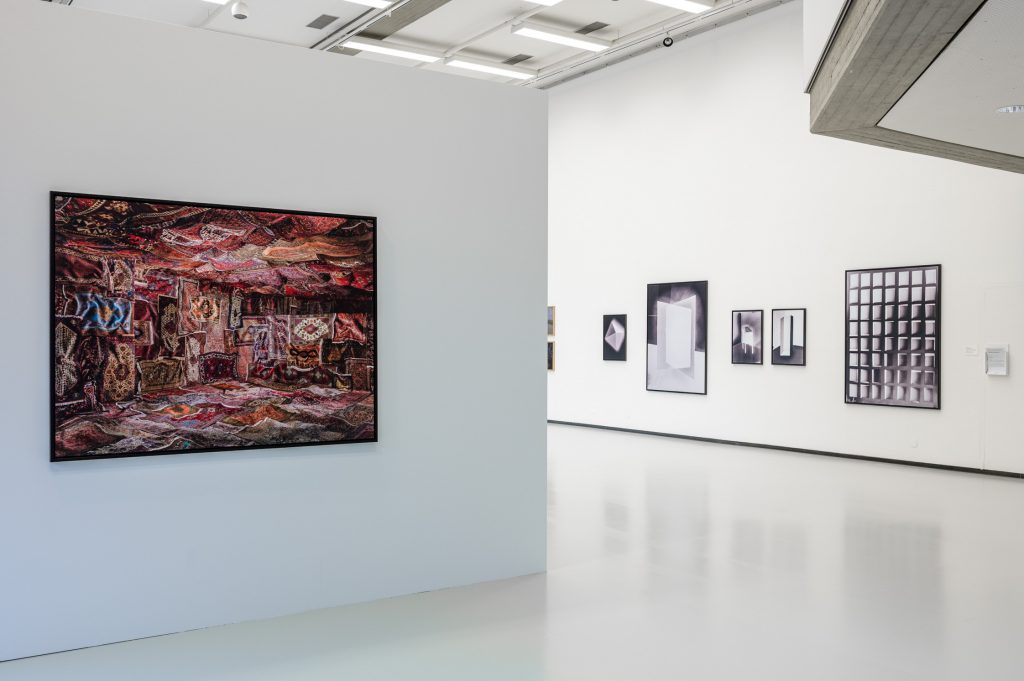
Sprengel Museum Hannover, Germany, 2021
Ottomane V
110 x 146 cm
Fine Art Pigment Print with Frame
© Werner/Herling
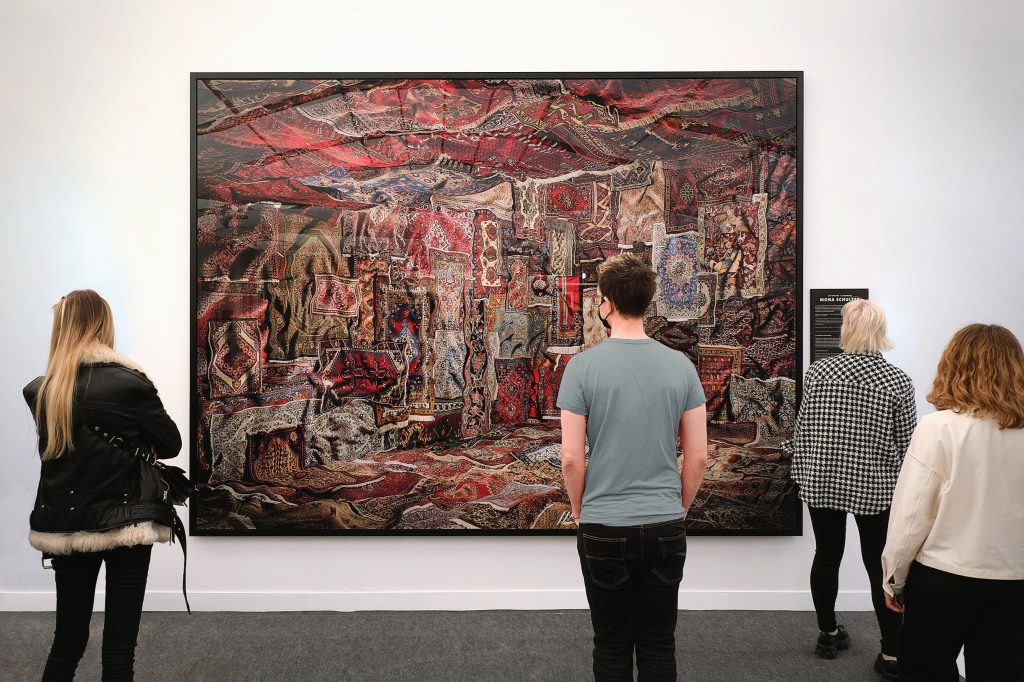
Paris Photo, France, 2021
Ottomane I (Cosmos)
248 x 328 cm
Fine Art Pigment Print under Acrylic Glass with Frame
© Sacha Lenormand

Max Ernst Museum (Germany), 2019
Ottomane V, I, III
105 x 140 cm, 80 x 105 cm, 105 x 140 cm
© Simon Bierwald
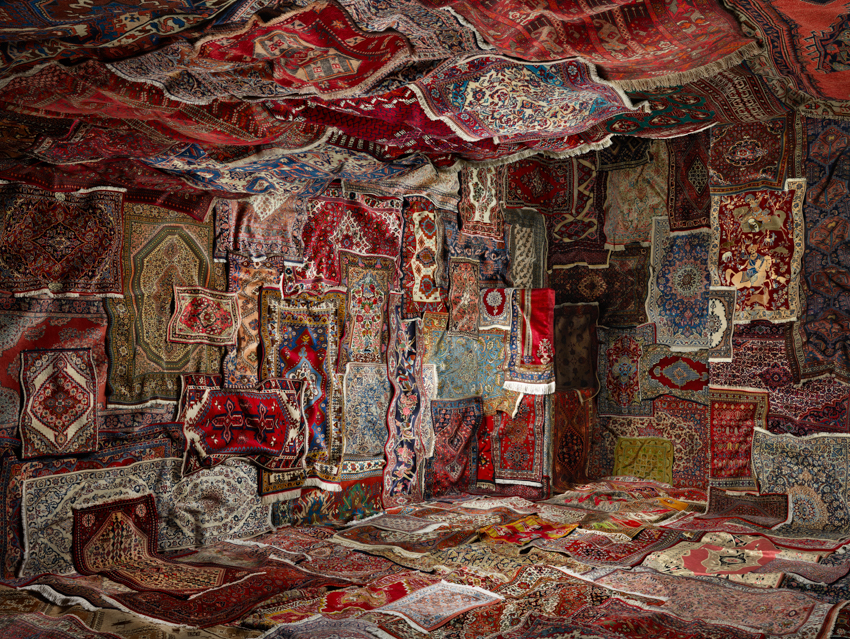 Ottomane I, 2016 Ottomane I, 2016
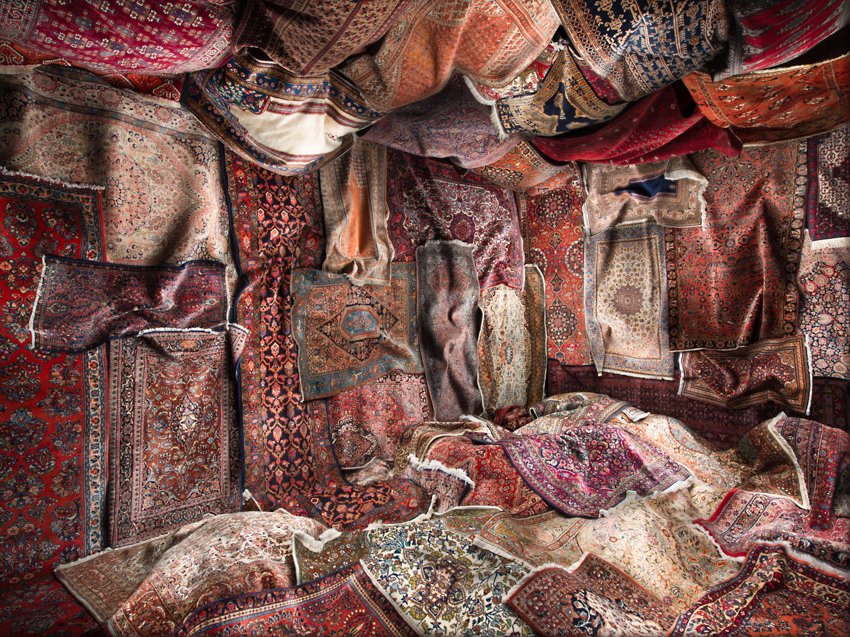 Ottomane II, 2016 Ottomane II, 2016
 Ottomane III, 2016 Ottomane III, 2016
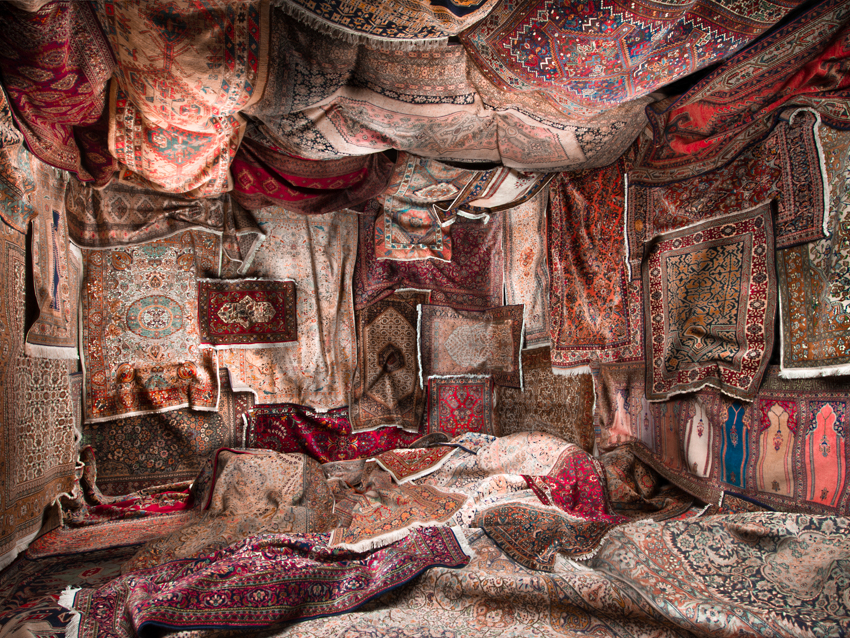 Ottomane IV, 2016 Ottomane IV, 2016
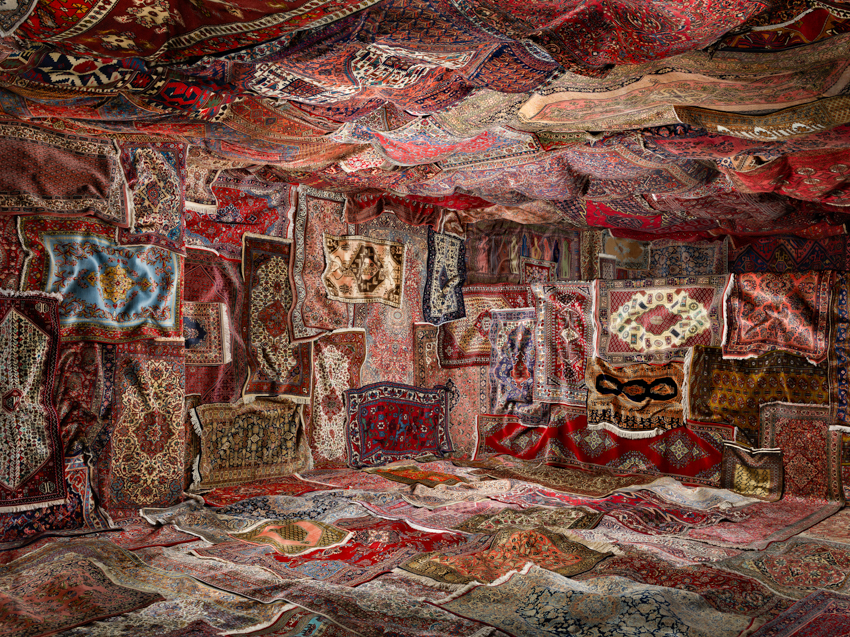 Ottomane V, 2016 Ottomane V, 2016
INTERVIEW w/ Arthur Dayras
THE EYE OF PHOTOGRAPHY Magazine
PARIS PHOTO 2021:
(A.D.): Mona, what was the idea behind the series “Ottomane”?
(M.S.): The idea was to transform a room in its sculptural aspects, to deal and see a room like a sculpture, as if it was a piece of wood or piece of stone. [The covered room was constructed all by myself without digital techniques]. When you’re standing far away from the picture, you see a collage of colors. And when you’re nearer, you see Persian carpets, different Persian carpets. And slowly you discover the room. The image is based on the sculptural aspect. You’re looking at the picture the same way you’d be exploring a sculpture.
A. D.: It’s mostly a play on sculpture, on space and on collage.
M. S.: It is. With all the uncertainties… To me, this picture gives the same idea as looking at the sky, looking at the cosmos with all its uncertainties.
A. D.: Cosmos has been a key element in your work, especially with one of your recent series, “Outer Space Transmitter”.
M. S.: The “Outer Space Transmitter“series is conceived as an antenna, where messages can be sent into outer space. These messages are mostly art images, like text-images, which differ from verbal communication that were sent previously in outer space. The process starts with a message you could write. I transform this message into an extraterrestrial alphabet I designed by myself and then I build an image.
[…]
A. D.: It reminds me of Galaxia Wang, an artist who also created his own alphabet and language, called Colossia, and most widely, invented a whole cosmogony. In his case, Colossia allows him to apprehend and express his synesthetic perception of the world by combining colors, smells, feelings or even faces into his own codification.
M. S.: Communicating with a different language that couldn’t just be spoken was the key idea in this photograph. It was about expressing the smell of the room, of tapestries, or the very own language of ornaments. I believe they are hidden stories in these objects.
A. D.: The picture can also be viewed through the prism of space. The ceiling for instance is somehow quite difficult to apprehend because of the superposition of carpets.
M. S.: Yes, I consider this picture as being in weightlessness. Where’s the ceiling? Where’s the ground? […]
A.D.: What were your references when you first thought about this picture? Were there any conceptual artists you’ve look at, referred to?
M. S.: I was more inspired by scientific research, mostly from NASA. The images from the Hubble Space Telescope show deep insights into the past of the cosmos.
A.D.: How did this research led you to a conceptual approach of space and how do you connect outer space with traditional elements like persian carpets?
M.S.: The carpets represent the image of a traditional Persian garden. It is embellished by flowers represents the four parts of the world, which surround a centre with a pond and a fountain. So the garden is a carpet where the entire world archieves its symbolic perfection, and the rug is a sort of garden that can be moved through space. That was said by Michel Foucault and what was really inspiring to me, was the idea that the garden is the smallest plot of land in the world and then, it is the entirety of the world.
–> entire interview <–
|



 Ottomane I, 2016
Ottomane I, 2016


